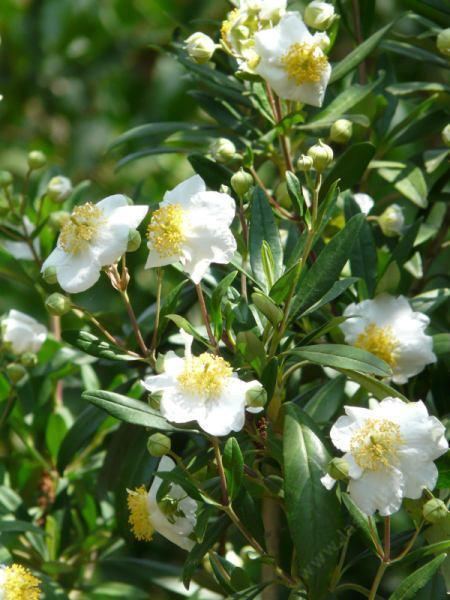Scientific name Carpenteria californica Rank Species | Genus Carpenteria Higher classification Carpenteria | |
 | ||
Similar Arctostaphylos densiflora, Calycanthus occidentalis, Ceanothus gloriosus, Cercis occidentalis, Frangula californica | ||
Carpenteria californica conseils d expert
Carpenteria californica /ˌkɑːrpənˈtɪəriə ˌkælᵻˈfɔːrnᵻkə/, the sole species in the genus Carpenteria, with the common names tree anemone and bush anemone.
Contents
It is a flowering evergreen shrub native to the Sierra Nevada foothills in California. It is closely related to the genus Philadelphus.
Distribution
It is a rare species, endemic to only seven sites in Fresno and Madera Counties, where it grows in chaparral and oak woodlands between 340–1,340 m (1,115–4,396 ft) altitude in the Sierra Nevada, between the San Joaquin River and Kings River. It is well adapted to wildfire, reproducing by stump sprouts after burning. Natural seedlings are rare.
Description
Carpenteria californica grows to 1–3 m (3 ft 3 in–9 ft 10 in) tall, with flaky bark on older stems. The leaves are opposite, lanceolate, 4–10 cm long and 1-2.5 cm broad, glossy green above, blue-green to whitish and downy beneath.
The flowers are 3–7 cm diameter, with 5-8 pure white petals and a cluster of yellow stamens; flowering is from late spring to mid summer. The fruit is a leathery capsule 6–12 mm diameter, containing numerous seeds.
Cultivation
Carpenteria californica is cultivated as an ornamental plant, grown for its lush appearing foliage, seasonal flowers and drought tolerance. It is used in traditional, native plant, and wildlife gardens in California and other Mediterranean climates, and in colder locations.
It has been in cultivation since 1875, and is now much more common in gardens than in its natural habitat. It first flowered in England for Gertrude Jekyll at Godalming in 1885. The species has gained the Royal Horticultural Society's Award of Garden Merit.
Cultivars include:
History
The genus was named in honor of Dr. William Marbury Carpenter, a noted botanist from Louisiana.
Note that Carpenteria should not be confused with the similarly spelled Carpentaria, a genus of palms native to northern Australia.
